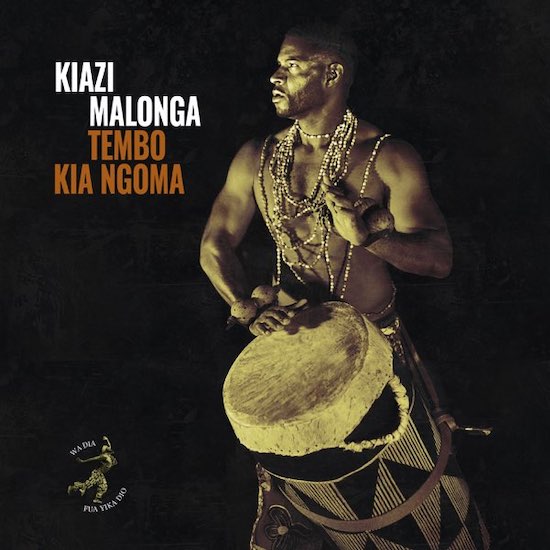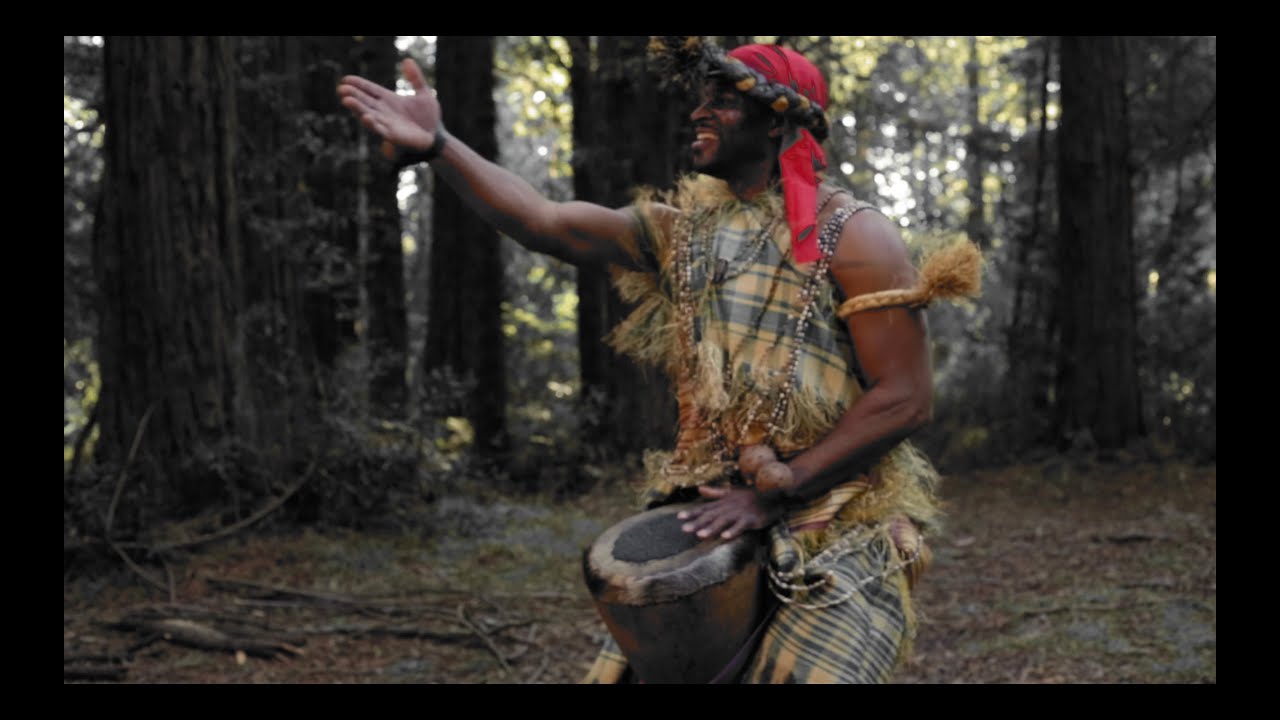In the Bantu languages spoken throughout Central, Eastern and Southern Africa, ‘ngoma’ represents an important part of musical and social culture. The literal translation is usually given as ‘drum’, but it more accurately refers to a unified concept of drum-dance-song-music. You can beat the ngoma, or sing it, or dance it, and in doing so, create ngoma. Ngoma is at once playing, moving and listening – it is by nature reciprocal and collaborative. Tembo kia Ngoma explores the drum and its wider meanings in sound in an impressive and considered debut from Congolese-American artist Kiazi Malonga.
The tall, tubular ngoma drum is the heart of this album. Building layers of ngoma together with nine other drums and percussion instruments, Kiazi creates textures that fill the sonic space without overwhelming. The rhythms – originating from seven different Congolese ethnic groups – constantly shift and phase, meaning that their irresistible repetition is anything but repetitive.
There is a tendency in Western music to use drums in a utilitarian way, providing a base rhythm from which other parts can launch. But when the drums are moved to the front of the stage, it’s obvious that their rhythms are inextricable from melody and harmony – or rather, that such conceptual distinctions are unnecessary. The ever-changing, ever-evolving nature of the polyrhythms has the same function as a chord sequence. Tunes form in the listener’s own ear, which select individual pitches within the interlocking sounds and join the dots to recognise recurring melodic constellations. The drum patterns become more akin to three-dimensional dancing shapes. These musical moirés are conjured at every moment throughout this album.
Not that drums and percussion are all there is here. Pitched instruments play their part: electric guitars, bass, marimba and drum kit come courtesy of producer Justin Phipps; Kiazi himself plays mpungui (an antelope horn blown like a trumpet) and kisansi (thumb piano); and the horn section of San Francisco collective Jazz Mafia give a lovely turn on the Afrobeat-meets-NOLA track ‘Ntâli Jazz’. The typical band dynamic, however, is flipped on its head. If, for example, guitars and bass twist around each other in a dark, modern soukous vibe (as on the track ‘Lomami’), they don’t use drums to accompany their own fireworks, but rather work as a grounding ostinato to keep the groove in place as Kiazi’s drums let rip.
For Kiazi, this album helps to look back to the family, mentors, and traditions that made him, and look ahead to find his own unique voice in the world. In that way, it also serves as a tribute to his father, the late, beloved musician and dancer Malonga Casquelourd. The album’s finale is bittersweet but joyous: a seven-and-a-half-minute recording of Casquelourd’s 40-strong choir Fua Dia Congo singing ‘Mbongui’, taken from a VHS recording from the 1990s. It’s simple but powerful: just overlapping voices, clapping, and stamping. A stark departure from the rest of the album, but it closes it well, maintaining the atmosphere and exemplifying Kiazi’s core messages.
Tembo kia Ngoma is the sound of a son striding on, carrying his father’s legacy. Ngoma lightens that burden. Listening-making, moving-hearing, drum-dance-song-music: ngoma is the perfect catalyst for meaningful, mutually-respectful collaboration between past and future. Kiazi Malonga makes it happen, and has a load of fun at the same time.



